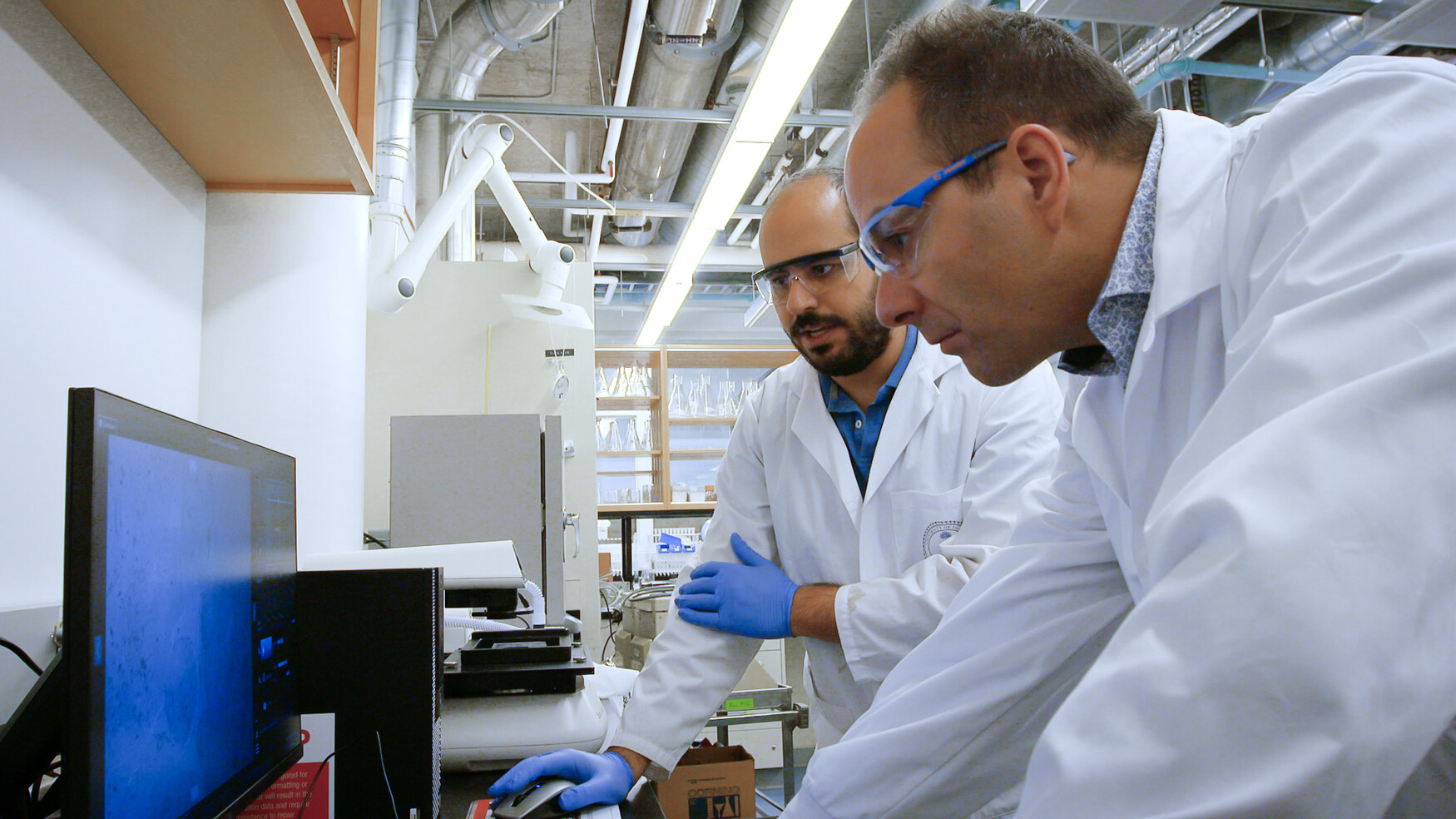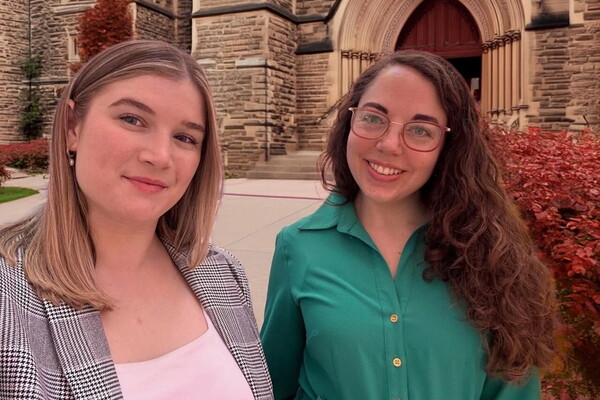Mobile Menu
- Education
- Research
-
Students
- High School Outreach
- Undergraduate & Beyond: Community of Support
- Current Students
- Faculty & Staff
- Alumni
- News & Events
- Giving
- About

The life-saving diabetic medication insulin, developed at the University of Toronto 100 years ago, was the first biologic therapy — a protein to treat disease. A century later, a new biologic therapy also developed by researchers at U of T has potential to reverse a common complication of diabetes.
A team led by Stéphane Angers, professor and associate dean of research at the Leslie Dan Faculty of Pharmacy, has developed a synthetic antibody as a promising treatment for diabetic retinopathy, which causes blindness and affects about 30 per cent of diabetes patients.
The researchers tested the antibody in both cell cultures and mice, and the journal EMBO Molecular Medicine published the results today.
“This study has shown that these antibodies are very attractive therapeutics to restore blood-retina barrier defects,” said Rony Chidiac, a postdoctoral fellow in the Angers lab and lead author of the study. “It gives new hope for the treatment of eye diseases like diabetic retinopathy and macular degeneration.”
Angers and his team are experts in the Wnt cell signalling pathway, which is crucial for the formation and maintenance of the blood-retina barrier, a physiological barrier that prevents molecules from entering the retina.
When the signalling pathway is disrupted — which can occur because of genetic mutations in rare eye conditions such as Norrie disease, or when tissue oxygen is low, as in diabetic retinopathy — the blood vessels can become leaky, causing damage in the eye.
In previous research, Angers had collaborated with Sachdev Sidhu at the Terrence Donnelly Centre for Cellular and Biomolecular Research to develop a catalogue of synthetic antibodies that could activate Wnt signalling.
Their new publication describes how one of the antibodies, specifically activating the Frizzled4-LRP5 receptor complex, successfully stimulated Wnt signalling in the blood-retina barrier and effectively restored barrier function.
The antibody attaches to two key cell surface receptors (Frizzled4 and LRP5) bringing them close together, and this induced proximity activates the Wnt pathway that maintains the blood vessels.
The team first tested the antibody in cell cultures and found that it was a highly precise way to trigger the signalling pathway and restore barrier function. They then tested the antibody in different mouse models in collaboration with Harald Junge at the University of Minnesota and AntlerA Therapeutics, a start-up company founded by Angers and Sidhu. One model represented a genetic eye condition and one represented diabetic retinopathy.
Remarkably, the antibody restored the barrier function and corrected retinal blood vessel formation in these mice. In addition, it normalized the pathological formation of new blood vessels, one of the consequences of a leaky blood-retina barrier that causes further eye damage.
With the antibody’s promising preclinical results, AntlerA Therapeutics will now lead the commercialization and translation to clinical studies.
While the current study’s results are focused on eye conditions, the similarities between the blood-retina barrier and blood-brain barrier mean that its applications could be much broader than eye conditions.
“The retinal vasculature was the first indication, and we have new funding to explore the role of this pathway in other contexts,” said Angers. “For example, we are testing whether this antibody could have implications in the blood-brain barrier and whether it could repair the barrier in the context of stroke.”
“We’ve found a way to activate Wnt signalling very precisely in order to have a viable therapeutic opportunity and actually treat these diseases,” added Chidiac. “We anticipate that this could have enormous impact in diverse applications in regenerative medicine.”


